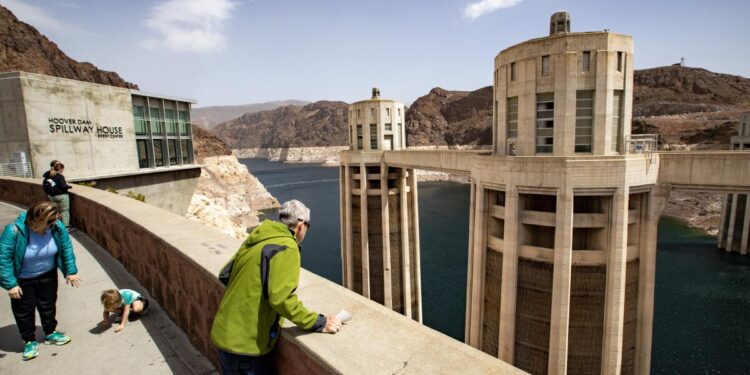To the Editor:
A round of applause for reporter Ian James and The Times for shedding light on the ongoing debate among states reliant on the Colorado River’s water. The narrative is complex, but their coverage has truly helped clarify the situation.
An emerging and rather unexpected factor adding to this issue is the extensive water usage by data centers, particularly those serving artificial intelligence systems. Google, for instance, reported consuming 6.1 billion gallons of water in 2023 to cool its data centers, marking a 17% increase from the previous year. This kind of consumption can’t be ignored.
For years, scientists have sounded the alarm: there’s no “Water Superman” coming to rescue us. This reality pushes us to prepare proactively for what we know is inevitable. In facing this urgency, we ought to explore varied approaches—beyond measures like converting wastewater for drinking, incentivizing farmers to reduce water usage, depleting underground aquifers, or engaging in further water disputes. Perhaps the construction of a 1,000-mile pipeline from Lake Michigan to the Colorado River is a solution worth considering.
We’ve hit “peak water.” To prevent our children and grandchildren from enduring severe emergency measures that only serve as temporary fixes, we need to escape traditional thinking in managing water resources for agriculture, the population, and now, data centers across seven Western states connected to the stressed Colorado River.
We owe it to future generations to embrace visionary plans and muster the political courage to make the 1,000-mile water pipeline a reality.
John Boal, Burbank
—
To the Editor:
The fair distribution of water from the Colorado River—or any source, for that matter—remains a distant dream until all parties recognize a simple truth: you can’t use water that doesn’t exist.
Many agencies approach the situation with a sense of entitlement: “I have a contract for a certain amount of acre-feet of water, so I’m going to take that much water.” However, this perspective is unsustainable.
I’ve yet to hear anyone suggest we scrap all existing contracts and instead, allocate water based on the actual flow into the Colorado River each year, using a percentage-based system.
Parker G. Emerson, Claremont
















